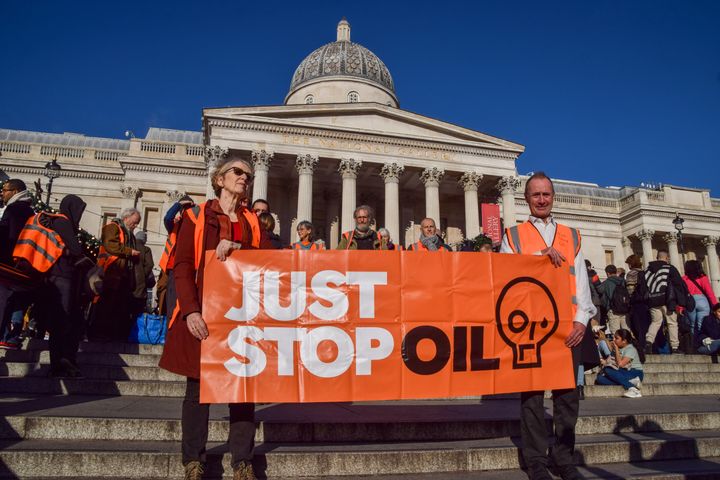The largest climate summit of the year began this week amid hope that world leaders may actually agree to an effective deal to target the environmental crisis.
The 28th Conference Of Parties – COP28 – is being held in Dubai, UAE, this year, and will run from November 30 to December 12.
Advertisement
Activists are looking for governments to agree for a more equitable management of the environment this year, as extreme weather hit almost every part of the planet over the last 12 months.
What’s decided at COP28 could therefore be very consequential – but it can be hard to understand what’s happening through all of the jargon.
So here’s a breakdown of some of the phrases we can expect to see this year.
1. Abated fossil fuels
The abatement of fossil fuels does not have an official definition, but is loosely meant to describe reducing use of the carbon-spewing resources.
It pops up regularly in climate commitment plans – it turned up seven times in the April G7 summit’s final statement – but the exact definition has not been spelt out by governments.
Advertisement
According to the UN’s Intergovernmental Panel on Climate Change (IPCC), it often alludes to the controversial practise of carbon capture and storage.
Critics see that as a means for the fossil fuel companies to continue selling the product, and it has been widely described as a delay tactic which stops companies from having to phase out fuels.
Supporters of abatement argue that this is needed for the foreseeable future, as the planet is not even close to phasing out fossil fuels altogether.
2. Climate finance
The UN describes climate finance as “local, national or transnational financing—drawn from public, private and alternative sources of financing—that seeks to support mitigation and adaptation actions that will address climate change”.
Effectively, developed nations promise to pass some funds onto developing countries that have fewer resources to defend against the climate crisis.
Advertisement
COPs have repeatedly agreed to pass more finances onto other countries since 1992.
Back in 2009, the parties agreed to share $100 billion a year from developed countries to developing countries by 2020, but this target was missed.
This year’s COP will see countries debate several controversial elements of climate financing: how the finance is allocated; how much goes to adaptation; and how much goes to loss and damage.
3. Carbon pricing
Carbon pricing ties the cost the public ends up paying for greenhouse gas emissions – from crop damage to sea level rise – to their sources through a price, according to the World Bank Group.
This usually means putting a price on the amount of CO2 emitted, in an effort to put the carbon burden back onto the producers of the fossil fuels, while also boosting revenue to help the environment.
President of the European Commission, Ursula von der Leyen, said in her opening remarks that there must be a “price on carbon”.
Advertisement
She said: “Carbon pricing nudges the private sector towards innovation. It makes heavy polluters pay a fair price. And the revenues can be reinvested in the fight against climate change, in innovation and in a just transition.”

SOPA Images via Getty Images
4. The UN Global Stocktake (GST)
This is a measure for countries (and other stakeholders) to see where they’re collectively making progress toward meeting the goals of the Paris Agreement, according to the UN.
It describes this as a “critical turning point” when it comes to addressing climate change, and akin to “taking inventory”.
The first ever global stocktake is going to conclude at the end of COP28, and will take place every five years after that.
Advertisement
It’s likely to be pretty damning considering scientists have warned we are still a long way off limiting global temperature change to 1.5C compared to pre-industrial levels.
“Governments will take a decision on the global stocktake at COP28, which can be leveraged to accelerate ambition in their next round of climate action plans due in 2025,” the UN said.
The GST is also meant to inform future NDCs.
5. Nationally Determined Contributions (NDCs)
These are the pledges at the centre of the Paris Agreement, and they’re unique to each country. They are submitted every five years to the UN – so the next ones will be due in 2025.
Each nation tries to see how it can reduce national emissions and adapt to climate change by taking these actions.
The UN understands these targets will be harder for developing countries to achieve, so emission reduction is “undertaken on the basis of equity, and in the context of sustainable development as well as efforts to eradicate poverty”.
Advertisement




